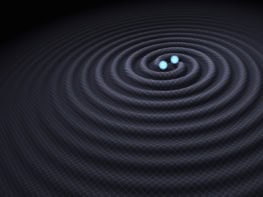
One of Japan’s premier particle-physics experiments has finished a major eight-year upgrade programme and will soon begin taking data. Physicists at the SuperKEKB accelerator based at the KEK particle-physics lab in Tsukuba will start ramping the accelerator over the next few weeks. First collisions in the completed detector are due to take place by the end of March.
SuperKEKB is a ¥29bn ($370m) upgrade to the 3 km-circumference KEKB collider, which consists of two underground circular accelerators – one carrying electrons and the other positrons. The collisions between these particles are then studied in the Belle-II detector – an upgrade to the original Belle detector. As Japan’s biggest electron–positron collider, KEKB shut down in 2010 for construction to start on SuperKEKB. The work involved upgrading the machine to produce electrons with an energy of 7 GeV, with the positron beam having an energy of 4 GeV.
We are very excited about the start of the physics run with the full detector
Thomas Browder
The upgrade will also increase the number of collision events by a factor of 40 over KEKB, which is achieved by shrinking the beams at the collision point to around 20 times smaller than the beam sizes achieved at KEKB while also doubling the beam currents. This should allow the machine to produce around 50 billion pairs of B mesons as well as other particles such as D mesons and tau leptons. Studying the decays of these particles could allow researchers to search for any deviations in the Standard Model of particle physics and also shed light on why there is more matter than antimatter in the universe.
Exploring the dark sector
The first electron–positron collisions at SuperKEKB were recorded last April before engineers began a six-month process fine-tuning the accelerator. Work then began on installing the final components of the Belle-II detector to help it handle the huge increase in the collision rate as well as survive the radiation damage caused by the increased flux. Staff also installed a vertex detector in Belle-II, which should make the detector better at pinpointing where particles decay. SuperKEKB achieves its first collisions
“We are very excited about the start of the physics run with the full detector, including the vertex detector, in place,” Belle-II’s Thomas Browder from the University of Hawaii told Physics World. Browder says that by the end of June, SuperKEKB should have accumulated an integrated luminosity of around 10 fb–1 (inverse femtobarn), which will enable first results on the search for “dark sector” particle such as dark photons and axion-like particles. “If all goes well, we will have first Belle-II results by the end of July,” he adds.



